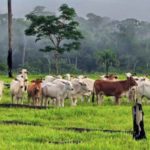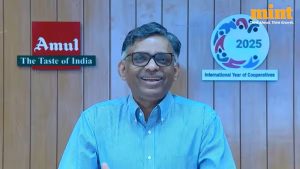
Farmers are at the barricades again over the issue of minimum support price (MSP), but production data shows they might be better off diversifying into dairy and horticulture.
Between 2011-12 and 2020-21, horticulture (fruits, vegetables, spices, flowers and plantation) showed 3.5% annual growth without govt’s price intervention (like MSP), whereas crops with strong support – paddy (rice), wheat, sugar cane and cotton – averaged 1.4% annual growth.

“It shows demand-driven factors can be much stronger than govt price support in pushing growth and farmers’ income,” Ramesh Chand, Niti Aayog member and one of India’s top agricultural economists, told TOI.
Chand said this has happened because people in India and abroad are choosing to consume more fruits and vegetables, meat, milk and fish, “offering producers a more remunerative environment to raise production”.

The trend can be traced all the way back to the 1960s, since when per-person availability of cereals has not even doubled, but that of fruits and vegetables has almost trebled. A joint working paper by Chand and his colleague Jaspal Singh also shows that perperson availability of oilseeds increased by less than 60% in these 60 years, and that of pulses is actually 33% lower now. Also, the share of cereals in Indian agriculture, by value, has fallen from more than a third in the 1970s to about one-sixth now, while that of horticulture has risen from about one-eighth to one-fifth.
Eggs are another remarkable success story, with an eight-fold increase since the 1960s, without any govt price intervention. “These changes show a clear shift in the composition of food output in favour of horticultural and livestock commodities,” said Chand.

Data clearly shows significant diversification in food production and consumption after 1981. For example, livestock products made up 17.6% of total agri output, by value, in 1980-81. This rose to 27.4% in 2001, and 36.9% in 2021.
So, should farmers switch over to horticultural crops from cereals? Agricultural scientists say they should, for not only better incomes but also India’s nutritional security and to prevent soil and water depletion.
Price support for two water-intensive crops – paddy and sugar cane – is indirectly taking a toll on India’s water resources. Govt offers MSP for paddy and ‘fair and remunerative price’ for sugar cane. This encourages farmers even in the drier regions to grow them with groundwater. While India earns forex through rice and sugar exports, it doesn’t compensate for the lost water resources.
“Horticulture provides an opportunity for crop diversification and intensification for adequate nutritious food, and augmenting farmers’ incomes,” Anand Kumar Singh, vice-chancellor, Chandra Shekhar Azad University of Agriculture & Technology, Kanpur, and former deputy director general, ICAR (horticultural science), told TOI. He said there are many success stories of farmers who have started growing highvalue fruits like avocado and dragon fruit.
Besides, horticulture scores over cereals in terms of productivity also. Where the average grain yield is 2.2 tonnes/hectare, that of horticulture crops is 5.6 times higher at 12.5 tonnes/ha.

















